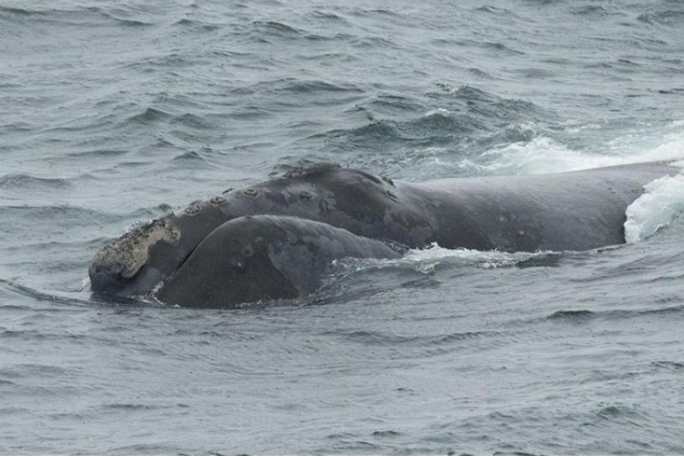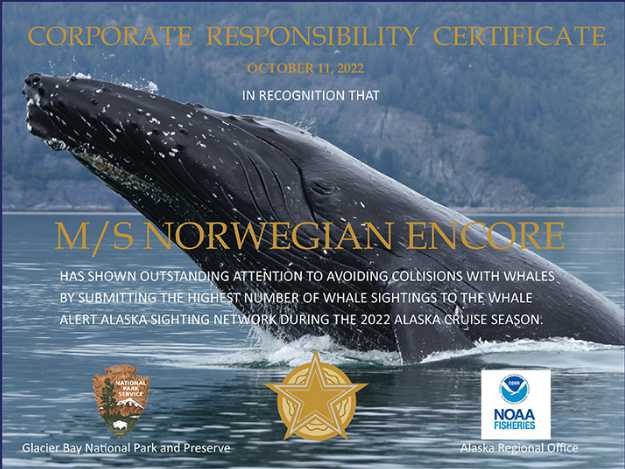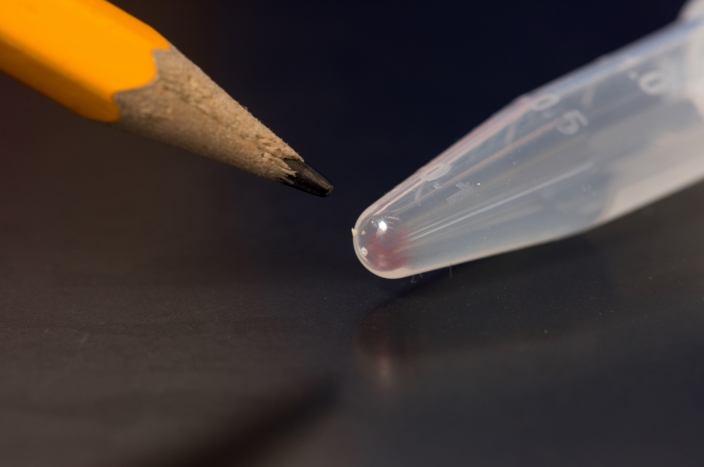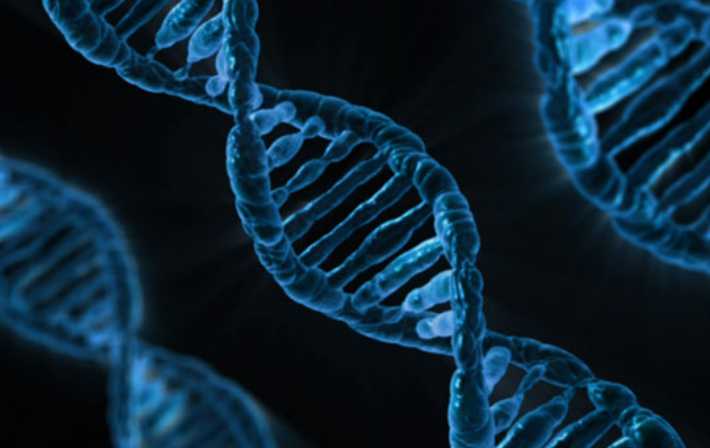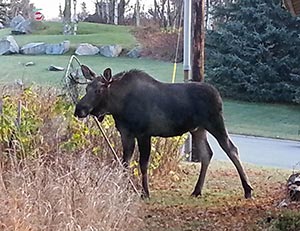
(Anchorage) —- The Alaska Department of Fish and Game is asking citizens to report moose sightings this weekend for the Anchorage winter moose count. Now entering its third year since an initial pilot project in February 2017, the novel, ground-based survey technique uses DNA taken from city moose to estimate moose numbers in the Anchorage Bowl. Moose sighting reports from Anchorage residents are key to the count’s success.
“The public’s help last year made all the difference,” said Wildlife Research Biologist David Saalfeld, “With residents pitching in, we were able to establish a minimum count of 143 individual moose.”
That count included 95 cow moose and 48 bulls. Of those, 43 were calves, including 19 females and 24 males. Data gathered from this weekend’s count will allow biologists to determine an even better estimate, Saalfeld said.
The groundbreaking count technique works like this: With citizens’ help moose are located and DNA collected with specialized darts. The darts strike moose lightly, collect a skin sample in the tip, and fall to the ground to be gathered after the animal leaves. Genetics from those samples is used to identify individual moose and generate the count.
[content id=”79272″]
Department research and management biologists are using this technology because traditional aerial moose counts within the Anchorage Bowl are impractical due to flight restrictions imposed over the busy metropolitan area. Inconsistent early-winter snow conditions needed to enhance moose visibility from the air were also a factor.
Citizens are invited to report moose sightings within the Anchorage Bowl from 8:00 a.m. Friday, February 22, through 5:00 p.m. Sunday, February 24.
Sightings may be reported as follows:
- Online at www.adfg.alaska.gov
- Phone at (907) 267-2530; or
- Text message at (907) 782-5051
Reports should include the number of moose observed, the time of the sighting, and most importantly the location of the moose.
“This technique has the potential to improve our knowledge and management of Anchorage area moose populations,” said Area Wildlife Biologist Dave Battle.
Safety is a critical concern with this project. Moose can be dangerous and citizens are reminded to avoid approaching moose, and to please give department survey teams collecting DNA samples plenty of space. Staff wearing bright orange or chartreuse clothing with stencils clearly identifying them as Department of Fish and Game employees will be using dart projectors that closely resemble long-guns or hunting rifles. Additionally, staff will be driving state trucks marked with the department logo.
Project expenses are covered by funds generated by hunters and shooting sports enthusiasts through payment of federal taxes on firearms, ammunition, and archery equipment, and through state hunting license and tag fees.
For more information about the Anchorage moose count, contact Ken Marsh at (907) 267-2892 or ken.marsh@alaska.gov.
Source: ADF&G

